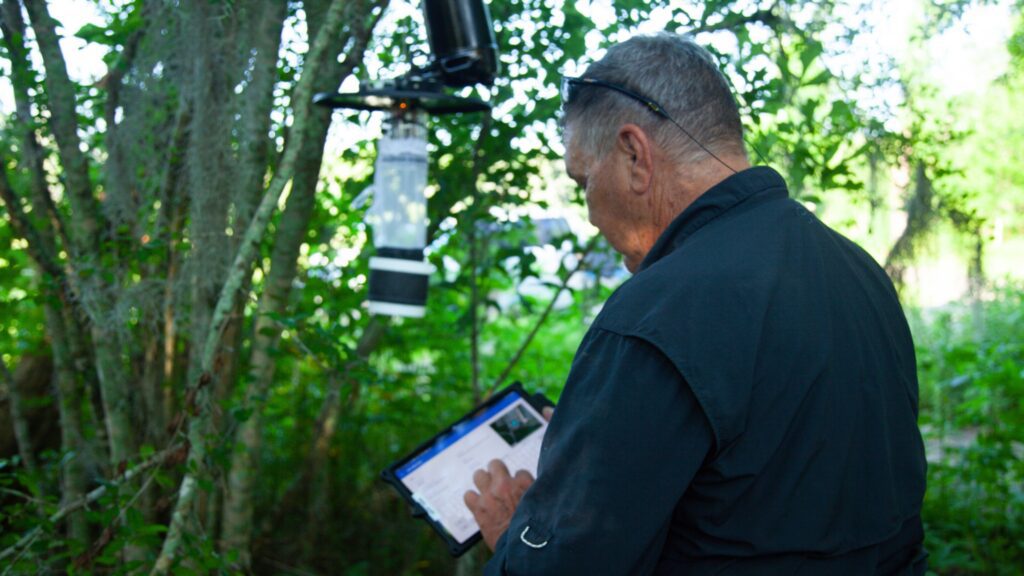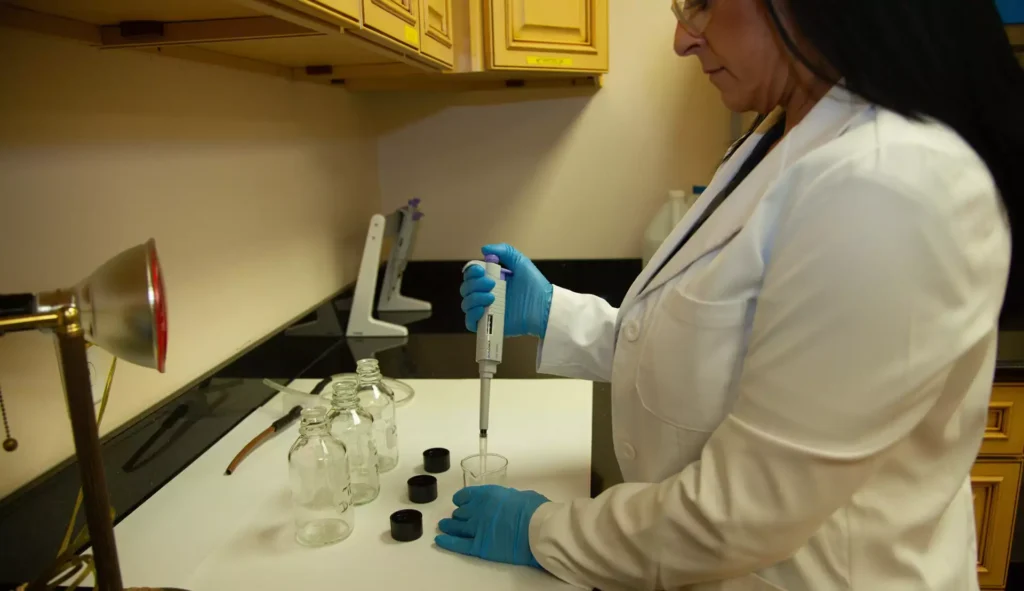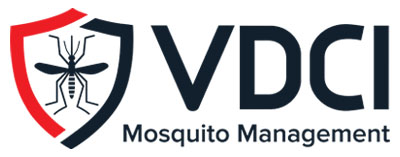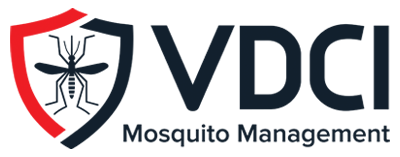Understanding The Best Practices for Mosquito Applications
Mosquitoes may be small, but they can have a significant impact on public health and quality of life by spreading potentially deadly diseases, including West Nile Virus, Eastern Equine Encephalitis, and dengue. Effective mosquito control is more than just applying insecticides—it’s a science rooted in meticulous data collection, precise planning, and thorough evaluation. Understanding best practices for pre- and post-application efficacy testing can ensure that efforts are both successful and environmentally responsible.
The most effective approach to mosquito management is implementing an Integrated Mosquito Management (IMM) program. Adulticides are essential tools in these programs. VDCI uses EPA-registered adulticide products to target adult mosquitoes. Adulticides are applied as fine droplets using Ultra-Low Volume (ULV) spraying equipment from trucks or planes. Once released, these extremely small droplets land on the cuticle of a mosquito, effectively killing it as they pass through the cuticle and enter into the inside body of the mosquito.
ULV applications maximize the impact of adulticides while minimizing the amount of product used. While proactive solutions are a key part of IMM programs, adulticides are a necessary tool to combat large mosquito populations and restore public safety.
Pre-application best practices

Setting mosquito traps several days prior to an application allows experts to establish a baseline population count and determine disease presence. Experts place traps in strategic areas and different trap types are used to target various mosquito species. This step is especially crucial after heavy rain events, which can create ideal mosquito breeding grounds if water collects and becomes stagnant. Monitoring mosquito populations helps determine the optimal timing for treatment and ensures applications are optimally targeted at the right place.
Proper calibration of ULV equipment is often overlooked but plays a crucial part in the preparation process. Miscalibrated equipment can result in incorrect pesticide droplet size or uneven product dispersal, which wastes resources, reduces mosquito mortality, and unnecessarily releases excess insecticides into the environment. Routine sprayer maintenance helps ensure nozzles are clean and free from clogs, and dispersal pumps and mechanisms function properly.
Each insecticide product formulation, whether oil- or water-based, also has unique cleaning requirements. Thorough cleaning between applications helps prevent residue build-up and prevents corrosion. For example, oil-based formulations often include lubricants; improper maintenance can lead to clogged lines and long-term corrosion within the metal fittings.
Monitoring weather conditions is an important part of pre-application planning. A successful application relies on specific environmental factors, including wind, humidity, stable temperatures, and a thermal inversion—this phenomenon isolates and “caps” the insecticide close to the ground, ensuring it reaches its target site, rather than dispersing it into the atmosphere.
Post-application best practices

Following a treatment, traps are redeployed and monitored again to assess the mosquito population. A significant decline in mosquito numbers indicates a successful application. However, if populations remain high, it may signal issues such as ineffective application, poor insecticide coverage, or potentially some insecticide resistance. Other signs of a successful application may be fewer complaints from the community and a drop in mosquito-borne disease cases.
Another parameter experts assess is insecticide resistance. This involves using tests like CDC Bioassays to expose adult mosquitoes to the adulticide and compare mortality against a control group. The results may suggest mosquitoes have developed resistance to the product, either through over-use of the product, behavioral changes, or other factors. As a result, experts may have to adjust application rates or switch to alternative formulations.
Mosquito management is an ongoing endeavor, so once control is established, it’s important to implement proactive strategies to keep mosquito populations at bay. Integrated Mosquito Management programs are designed to target mosquitoes at all lifecycle stages, starting with their breeding development. Educating the public about common breeding sites can help ensure reduced mosquito reproduction. For example, eliminating standing water in outdoor buckets, pet bowls, bird baths, flower saucers, old tires, tarps, and other outdoor objects can make a significant impact in reducing the number of mosquitoes in a particular area. Experts can also identify breeding grounds like ditches and stormwater ponds, and apply larvicides to prevent mosquito larvae from developing into adults.
Finally, ongoing monitoring and data collection provide experts with critical information to identify changes in mosquito populations and species distribution, thereby helping prevent potential population increase and reducing the public health threat. While mosquitoes remain a persistent challenge, adhering to rigorous pre- and post-application best practices can help optimize resources, reduce environmental impacts, and strengthen trust in community leaders.
Contact Our Experts
Complete the form below or call us at 800-413-4445 to speak to an expert about your mosquito management needs.
 Since 1992, Vector Disease Control International (VDCI) has taken pride in providing municipalities, mosquito abatement districts, industrial sites, planned communities, homeowners associations, and golf courses with the tools they need to run effective mosquito control programs. We are determined to protect the public health of the communities in which we operate. Our mosquito control professionals have over 100 years of combined experience in the field of public health, specifically vector disease control. We strive to provide the most effective and scientifically sound mosquito surveillance and control programs possible based on an Integrated Mosquito Management approach recommended by the American Mosquito Control Association (AMCA) and Centers for Disease Control and Prevention (CDC). VDCI is the only company in the country that can manage all aspects of an integrated mosquito management program, from surveillance to disease testing to aerial application in emergency situations.
Since 1992, Vector Disease Control International (VDCI) has taken pride in providing municipalities, mosquito abatement districts, industrial sites, planned communities, homeowners associations, and golf courses with the tools they need to run effective mosquito control programs. We are determined to protect the public health of the communities in which we operate. Our mosquito control professionals have over 100 years of combined experience in the field of public health, specifically vector disease control. We strive to provide the most effective and scientifically sound mosquito surveillance and control programs possible based on an Integrated Mosquito Management approach recommended by the American Mosquito Control Association (AMCA) and Centers for Disease Control and Prevention (CDC). VDCI is the only company in the country that can manage all aspects of an integrated mosquito management program, from surveillance to disease testing to aerial application in emergency situations.

